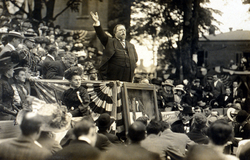
Monroe County is a county in the U.S. state of Michigan. As of the 2020 Census, the population was 154,809. The largest city and county seat is Monroe. The county was established as the second county in the Michigan Territory in 1817 and was named for then-President James Monroe. Monroe County is coterminous with the Monroe metropolitan statistical area.

George Armstrong Custer was a United States Army officer and cavalry commander in the American Civil War and the American Indian Wars.

Monroe is the largest city and county seat of Monroe County, Michigan, United States. The population was 20,462 as of the 2020 census. The city is bordered on the south by Monroe Charter Township, but the two are administered autonomously. Monroe is the core city in the Monroe metropolitan area, which is coterminous with Monroe County and had a population of 154,809 in 2020. Located on the western shores of Lake Erie approximately 20 miles (32 km) northeast of Toledo, Ohio, and 40 miles (64 km) southwest of Detroit, the city is part of the Detroit–Ann Arbor–Flint combined statistical area.

Edward Clark Potter was an American sculptor best known for his equestrian and animal statues. His most famous works are the marble lions, nicknamed Patience and Fortitude, in front of the New York Public Library Main Branch
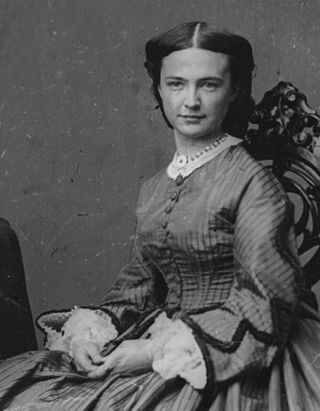
Elizabeth Bacon Custer was an American author and public speaker who was the wife of Brevet Major General George Armstrong Custer, United States Army. She spent most of their twelve-year marriage in relative proximity to him despite his numerous military campaigns in the American Civil War and subsequent postings on the Great Plains as a commanding officer in the United States Cavalry.
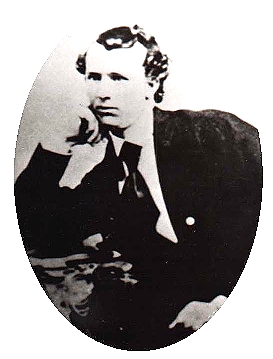
Boston Custer was the youngest brother of U.S. Army Lt. Colonel George Armstrong Custer and two-time Medal of Honor recipient Captain Thomas Custer. He was killed at the Battle of the Little Bighorn along with his two brothers.
The Battle of Hunterstown was an American Civil War skirmish at Beaverdam Creek near Hunterstown, Pennsylvania, on July 2, 1863, in which Wade Hampton's Confederate cavalry withdrew after engaging George Armstrong Custer's and Elon Farnsworth's Union cavalry.
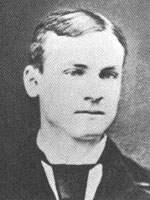
Henry Armstrong Reed was the nephew of George Armstrong Custer, Thomas Custer, and Boston Custer. Although not an official soldier, he was killed along with them at the Battle of the Little Bighorn at the age of 18.

George Wilhelmus Mancius Yates was an officer in the U.S. 7th Cavalry Regiment. He was killed in the Battle of the Little Bighorn.
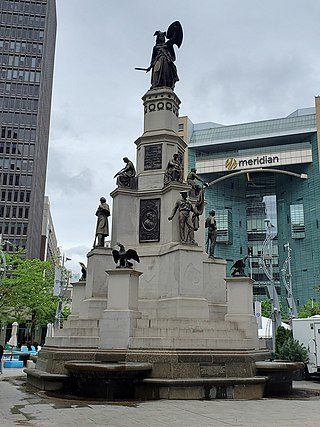
The Michigan Soldiers' and Sailors' Monument is a Civil War monument located in Downtown Detroit, Michigan. This example of civic sculpture stands in a prominent location on the southeast tip of Campus Martius Park, where five principal thoroughfares—Michigan Avenue, Monroe Street, Cadillac Square, Fort Street, and Woodward Avenue—convene on the reconstructed traffic circle in front of One Campus Martius Building. It was listed on the National Register of Historic Places in 1984.

They Died with Their Boots On is a 1941 American Biographical western film from Warner Bros. Pictures, produced by Hal B. Wallis and Robert Fellows, directed by Raoul Walsh, that stars Errol Flynn and Olivia de Havilland.

The River Raisin National Battlefield Park preserves the site of the Battle of Frenchtown as the only national battlefield marking a site of the War of 1812. It was established as the 393rd unit of the United States National Park Service under Title VII of the Omnibus Public Land Management Act, which was signed into law on March 30, 2009. The park is located in the city of Monroe in Monroe County, Michigan. It was designated as a Michigan Historic Site on February 18, 1956 and was added to the National Register of Historic Places on December 10, 1982. The house at 1403 East Elm Avenue was added to the National Register listing in 2019. It officially began operation as a national park unit on October 22, 2010.
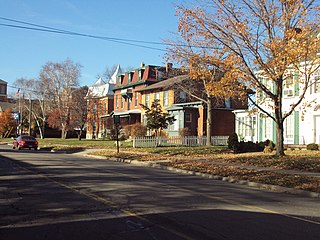
The East Elm–North Macomb Street Historic District is a residential historic district located in the city of Monroe in Monroe County, Michigan. The district was listed as a Michigan Historic Site and added to the National Register of Historic Places on May 6, 1982.

The Old Village Historic District is a commercial and residential historic district consisting of the downtown area of the city of Monroe in Monroe County, Michigan. The district was listed as a Michigan Historic Site and added to the National Register of Historic Places on May 6, 1982.
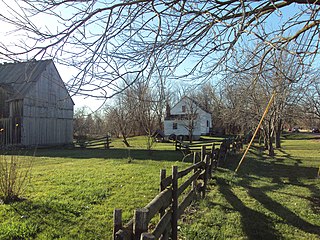
The Navarre–Anderson Trading Post is a former trading post complex located at 3775 North Custer Road in Frenchtown Charter Township along the River Raisin in Monroe County, Michigan. It was listed as a Michigan Historic Site on June 16, 1972 and also listed on the National Register of Historic Places on July 31, 1972.

The St. Mary's Church Complex Historic District is a historic district located at the junction of Elm Avenue and North Monroe Street (M-125) in the city of Monroe, Michigan. It was listed as a Michigan Historic Site and added to the National Register of Historic Places on May 6, 1982.

Woodland Cemetery is a public, city-owned cemetery located at 428 Jerome Street in the city of Monroe in the U.S. state of Michigan. It occupies 10 acres (4.0 ha) and contains over 6,500 graves. Founded in 1810, it is one of Michigan's oldest public cemeteries. Its oldest burials are veterans who served in the American Revolutionary War. Woodland Cemetery was designated as a Michigan State Historic Site on July 21, 1988.
Daniel Stanton Bacon was an American politician and judge. He served as a member of the Michigan House of Representatives. He was the father of Elizabeth Bacon Custer, wife and later widow of General George Armstrong Custer.

The equestrian statue of Charles Devens is a public monument in Worcester, Massachusetts, United States. Located in front of the old Worcester County Courthouse in the Institutional District, the equestrian statue honors Charles Devens, who served as a general in the Union Army during the American Civil War and later served as United States Attorney General. The statue was designed by Daniel Chester French and Edward Clark Potter and was dedicated on July 4, 1906.

Alfred E. Bates was a career officer in the United States Army. A veteran of the American Civil War, American Indian Wars, and Spanish–American War, he attained the rank of major general and was best known for his service as Paymaster-General of the United States Army from 1899 to 1904.



